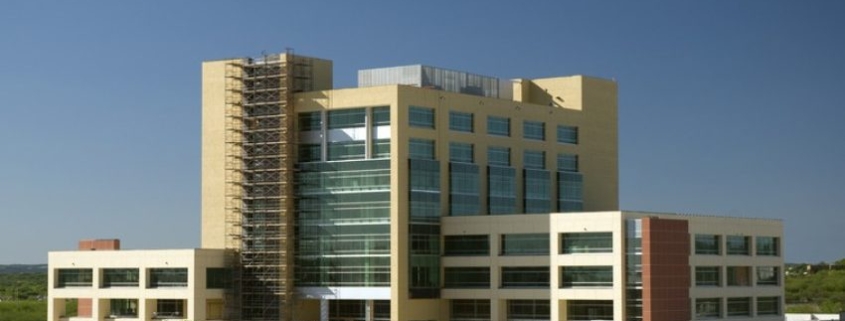Healthcare Developers Need Flexibility To Succeed
The world of healthcare real estate has experienced more profound change in the past few years than perhaps any other sector.
Along with advances in medical technology, the transformation of healthcare delivery by the introduction of Obamacare has led providers to demand different types of facilities. And that means opportunities for developers and investors, if they understand the marketplace’s new realities.
The construction of massive hospitals is no longer wanted, experts agreed at Bisnow’s National Healthcare Midwest 2018 event in Chicago. BEAR Construction Co. project executive Victor Senese moderated a panel that examined what builders can expect in the future.
“We’re not building any new bed towers,” said Jeff Janicek, vice president of healthcare for Skender, a Chicago-based construction firm. That is primarily because healthcare systems are now required to improve efficiency, and many providers have decided they can achieve these goals by caring for people in their own neighborhoods. “There is now more of a focus on specialty groups.”
And with Amazon and other internet retailers putting pressure on traditional retailers, now is also the perfect time for developers to create new medical offices at low cost.
“There is a ton of retail space available,” Janicek said. “The anchor store in a local mall may no longer be a grocery.”
“The current demand is so great that many providers’ chief concern is getting new outpatient facilities up and running quickly,” BJC HealthCare Executive Director of Planning and Design Donna Ware said.
She estimated it typically takes about 18 months to design and complete a medical office building.
“We need to be faster than that,” Ware siad.
But like Janicek, she believes the real estate already exists if you look in the right places. Buildings recently occupied by groceries, even pizza parlors and other restaurants, can serve as outpatient facilities after a relatively modest amount of reconstruction.
“Other types of development will be more complex,” Environmental Systems Design Operations Director Randall Ehret said. “The Affordable Care Act started a mad dash to outpatient facilities. Many of these delivered basic care, but in the years since providers have also started establishing new intensive care units and other facilities that use more advanced medical technology. A lot of these are infrastructure intensive.”
The shift to decentralized facilities doesn’t mean developers will always fix up old grocery outlets. In fact, with so many medical professionals moving away from big hospital campuses, office buildings dedicated to healthcare are growing.
“Twenty-five years ago, the medical office building was between 10K and 20K SF,” HSA PrimeCare President John Wilson said.
These structures were occupied mostly by small physicians’ offices. Today, HSA sees a lot of demand for buildings between 150K and 200K SF, sometimes dedicated to one tenant, such as a hospital system. Chicago-based HSA recently finished the 109K SF Drexel Town Square Health Center, an outpatient and diagnostic center in Oak Creek, Wisconsin, a Milwaukee suburb, for Froedtert Hospital System and the Medical College of Wisconsin.
Wilson considers it a model for the future. Like most new facilities, it treats people with a wide variety of concerns, and includes a cancer treatment center, an emergency room and many other services..
But what the panelists most emphasized was the need for flexibility in design. The clients for the Drexel building, for example, originally wanted about 75K SF, but after a deeper evaluation of the community’s needs, ended up asking for 109K SF..
“If demand for its services intensify, the building can be expanded even further to about 130K SF.” Wilson said “It has to be almost like an accordion.”
“Healthcare needs are always changing and new technologies are always on the way,” Ware added “so developers need to think ahead.”
Ehret said his firm puts a lot of thought not just into what a particular space needs today, but also what it might need tomorrow. A neighborhood’s pediatric unit may get replaced by a senior care provider as local demographics shift. New machines that did not exist when a room was designed may need to be squeezed in.
“And even though flexibility can carry a pretty hefty price tag, in the end healthcare providers will appreciate it,” Ware said.
Source: Bisnow


